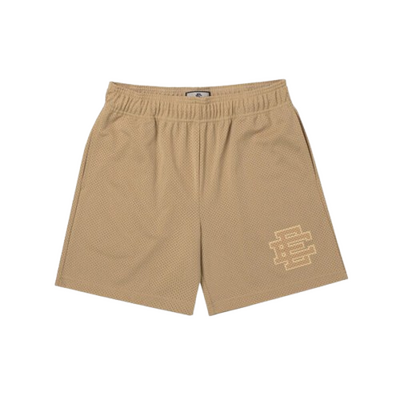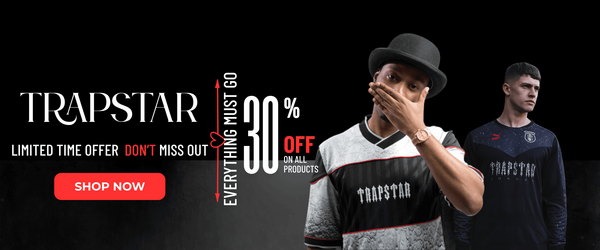Notifications
ALL BUSINESS
COMIDA
DIRECTORIES
ENTERTAINMENT
FINER THINGS
HEALTH
MARKETPLACE
MEMBER's ONLY
MONEY MATTER$
MOTIVATIONAL
NEWS & WEATHER
TECHNOLOGIA
TV NETWORKS
VIDEOS
VOTE USA 2026/2028
INVESTOR RELATIONS
COMING 2026 / 2027
ALL BUSINESS
COMIDA
DIRECTORIES
ENTERTAINMENT
FINER THINGS
HEALTH
MARKETPLACE
MEMBER's ONLY
MONEY MATTER$
MOTIVATIONAL
NEWS & WEATHER
TECHNOLOGIA
TV NETWORKS
VIDEOS
VOTE USA 2026/2028
INVESTOR RELATIONS
COMING 2026 / 2027
About Me
 Eric Emanuel
Eric Emanuel Shop the latest collection of Eric Emanuel Clothing, including EE Hoodies, EE T-Shirts, EE Shorts, EE Sweatsuits, and many others, at our official shop.
 Eric Emanuel -
7 hours ago -
Shopping -
fashion
Shopping
clothing
-
26 views -
0 Comments -
0 Likes -
0 Reviews
Eric Emanuel -
7 hours ago -
Shopping -
fashion
Shopping
clothing
-
26 views -
0 Comments -
0 Likes -
0 Reviews

In today’s dynamic fashion landscape, streetwear has emerged as more than just clothing—it's a cultural statement. Among the front-runners of this urban fashion movement are Eric Emanuel and Trapstar, two powerhouses that blend individuality, creativity, and authenticity into their apparel. These brands are more than trends; they represent identity, passion, and lifestyle. Whether it's EE shorts or a standout Trapstar jacket, these labels continue to turn heads and set new standards in the streetwear industry.
Founded in New York, Eric Emanuel started with a simple vision—to reimagine athletic wear with a luxury twist. The brand first gained recognition with its premium-quality basketball shorts, transforming what was once basic gym attire into coveted streetwear pieces. His designs combine nostalgia with innovation, speaking to both athletes and fashion-forward youth.
Eric Emanuel Shorts pieces are known for their bold colors, mesh textures, and effortless fits. Whether it’s a hoodie, sweatpants, or the famous EE shorts, each piece embodies a laid-back yet stylish vibe. The shorts especially have become a staple during the warmer seasons, representing both comfort and cutting-edge street style. Designed to be versatile, they are equally suitable for lounging, social gatherings, or casual city strolls.
Emanuel’s meteoric rise is also driven by high-profile collaborations with brands like Adidas, New Era, and Reebok. Celebrities like Travis Scott, Justin Bieber, and LeBron James have been spotted in Eric Emanuel gear, cementing its influence across music, sports, and fashion scenes.
Trapstar was established in London by three childhood friends who wanted to build a brand that reflected their reality and street culture. With the motto “It’s a Secret,” Trapstar built its name through exclusivity, mystery, and authenticity. Unlike traditional brands, it rose through word-of-mouth and grassroots marketing, giving it a cult-like following.
Trapstar’s signature aesthetic blends gritty, urban energy with futuristic visuals. The Trapstar jacket, for instance, is a piece of wearable attitude—often showcasing bold prints, oversized silhouettes, and reflective details. Similarly, the Trapstar tracksuit balances sportiness with a rebellious edge, often featuring graphic logos and distinctive paneling.
The brand gained significant traction when artists like Rihanna, Stormzy, and A$AP Rocky embraced it. This international endorsement launched Trapstar onto the global stage. Eventually, the brand collaborated with Puma, producing collections that pushed the boundaries of streetwear even further.
While Eric Emanuel and Trapstar have different design philosophies—Emanuel leaning into colorful sports luxe, and Trapstar veering towards darker, militaristic tones—they share a commitment to cultural authenticity and quality. They don’t just sell clothes; they sell lifestyle, identity, and expression.
Both brands have found their roots deeply intertwined with music culture. From hip-hop to grime, music artists have been instrumental in pushing their visual language. Whether it’s rappers flexing in EE shorts on tour or donning a Trapstar tracksuit in music videos, the connection is clear and intentional.
What truly sets Eric Emanuel and Trapstar Tracksuit apart is how they represent their communities. These aren’t just clothes for the elite; they are for people who relate to the story. The brands resonate deeply with the youth because they mirror the dreams, struggles, and aspirations of everyday life.
A common thread between Eric Emanuel and Trapstar is their unwavering dedication to quality. Whether it's the stitching on an EE short or the detail on a Trapstar jacket, the craftsmanship is evident. These brands understand that in a world of fast fashion, premium quality still reigns supreme.
Both labels embrace the concept of limited releases. Drops often sell out within minutes, contributing to their scarcity and desirability. This strategy not only fuels demand but also strengthens their street cred. Wearing an Eric Emanuel piece or a Trapstar tracksuit becomes a badge of authenticity.
What began in the streets of New York and London now commands attention in Tokyo, Paris, and Los Angeles. Eric Emanuel and Trapstar have transcended geographic boundaries, proving that authentic streetwear has universal appeal.
These brands have mastered the art of digital storytelling. Through platforms like Instagram, TikTok, and YouTube, they maintain a strong connection with their audience. User-generated content, influencer partnerships, and sneak peeks create an ongoing dialogue between brand and consumer.
Both brands are not content with staying static. Eric Emanuel has hinted at new silhouettes beyond EE shorts, including jackets and layering pieces. Trapstar, meanwhile, continues to innovate with its outerwear, particularly through evolving designs in its signature Trapstar jacket and accessories.
As fashion moves toward sustainability, fans eagerly anticipate how these streetwear giants will adapt. With growing awareness of environmental impact, future collections may blend signature aesthetics with eco-conscious materials.
Conclusion: The Legacy in the Making
Eric Emanuel and Trapstar are more than just labels—they are cultural phenomena. Their stories are rooted in authenticity, resilience, and passion. Whether you’re rocking EE shorts in the summer heat or layering up with a Trapstar jacket in the winter chill, you’re not just wearing fashion—you’re wearing a movement.
These two brands exemplify what it means to be at the heart of streetwear: relevant, real, and constantly evolving. As they continue to grow and shape the fashion industry, one thing is certain—the world is watching, and the streets are listening.
